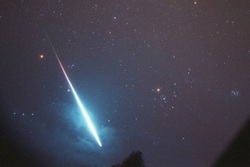
Best viewed in the early morning around 3am looking towards the northern horizon.

Usually not as prominent in the southern latitudes but can still produce excellent meteors. Perseids - 17 July - August 24 with peak viewing on 13 August. This is the 1st annual meteor shower caused by debris from Halley's Comet. Aquarids – 21 Apr – 12 May: Maximum peak of meteors at around midnight, 5/6 May.Ĭan produce some very bright meteors and occasional bolides. This shower can produce spectacular meteors. This shower is caused by debris from Comet Thatcher. Point your feet towards the northern sky and look about 45 degrees above the horizon. The Lyrids meteor shower is best viewed after midnight on 22 April or well before sunrise on 23 April. The Lyrids radiant is close to the Lyra constellation, and rises just after midnight in the southern hemisphere and moves across the northern sky. Lyrids – April 16 – 25, peaks around April 22nd, 23rd. Month, Radiant, Duration & Maximum (peak). Below some of the better annual meteor showers. Meteors are typically seen around 100 km altitude with few particles/meteoroids surviving below 80 km.


Large ram pressure forces heat particles and the surrounding atmosphere and a visible meteor is seen. When the Earth intercepts a debris stream, individual particles may travel through the earth's atmosphere. Meteor Shower Viewing Information “Tonight I feel like a shooting star, but I hope my shine will last much longer.” ― Bernard Janįor those who have been fortunate enough to have experienced an intense and spectacular evening watching meteors whizz by silently in the heavens, or, even luckier still, a magnificent bolide, there is no turning back from the search for the next big shower event.įor those just starting out on their quest to see the night sky awaken with beatiful falling stars, here is a list of dates to that will help you plan for the next big event in Australian skies.Ī meteor shower may occur when the Earth passes near the orbital path of a comet or an asteroid cluster.


 0 kommentar(er)
0 kommentar(er)
